Avocado trees are becoming increasingly popular among homeowners and gardeners due to their delicious fruit and unique appearance. However, growing an avocado tree can be a challenging task, especially if you’re not familiar with the different stages of growth and the tree’s life cycle. In this article, I will provide an overview of the avocado tree growth stages and life cycle, including seed germination, sapling development, juvenile phase, flowering and pollination, fruit development and maturation, mature tree care, pest and disease management, harvesting, reproductive cycle, and tree senescence.

The avocado tree (Persea americana) belongs to the Lauraceae family and is native to Mexico and Central America. The tree is evergreen and can reach up to 20 meters in height, although most cultivated varieties are much smaller. The avocado tree is unique in that it produces its fruit in a non-climacteric manner, meaning that it does not ripen after being harvested. Instead, the fruit ripens while still attached to the tree, which makes harvesting more challenging.
Key Takeaways
- Avocado trees belong to the Lauraceae family and are native to Mexico and Central America.
- The avocado tree life cycle includes seed germination, sapling development, juvenile phase, flowering and pollination, fruit development and maturation, mature tree care, pest and disease management, harvesting, reproductive cycle, and tree senescence.
- Growing an avocado tree can be challenging, but understanding the different stages of growth can help you successfully cultivate and harvest delicious avocados.
Avocado Tree Taxonomy

Avocado trees belong to the flowering plant family Lauraceae. The scientific name for the avocado tree is Persea americana. This species is native to Central America and Mexico, but it is now widely cultivated in tropical and subtropical regions around the world.
The avocado tree is an evergreen tree that can grow up to 20 meters tall. It has large, glossy leaves that are dark green on the upper surface and lighter green on the underside. The tree produces small, greenish-yellow flowers that are pollinated by bees and other insects.
There are several different types of avocado trees, each with its own unique characteristics. Some of the most common types of avocado trees include:
- Hass: This is the most popular type of avocado tree in the world. It produces a medium-sized fruit with a dark, bumpy skin and a creamy, nutty flesh.
- Fuerte: This type of avocado tree produces a large, pear-shaped fruit with a thin, smooth skin and a buttery, rich flavor.
- Bacon: This is a smaller type of avocado tree that produces a fruit with a smooth, green skin and a mild, nutty flavor.
These are just a few examples of the many different types of avocado trees that are grown around the world. Each type has its own unique characteristics and is suited to different growing conditions.
Seed Germination
As an avocado tree grows, it goes through several stages. The first stage is seed germination, which is when the avocado seed sprouts and begins to grow into a seedling. In this section, I will discuss the preparation and planting process for avocado seeds, as well as the germination process.
Preparation and Planting
To start the germination process, you need to remove the pit from a ripe avocado fruit and wash it thoroughly. Once you have the pit, you need to prepare it for planting. To do this, you can follow these steps:
- Cut the avocado in half and remove the pit.
- Wash the pit thoroughly to remove any remaining fruit.
- Dry the pit with a paper towel.
- Pierce the pit with three toothpicks, spaced evenly around the circumference of the pit.
- Fill a glass with water and place the pit in the water, with the toothpicks resting on the rim of the glass.
- Place the glass in a warm, sunny spot, and wait for the roots to appear.
Germination Process
Once the pit is prepared and planted, it will begin to germinate. The germination process can take anywhere from 2-6 weeks, depending on the conditions. During this time, the following stages will occur:
- The pit will split open, and a taproot will emerge from the bottom.
- A shoot will emerge from the top of the pit.
- The shoot will develop leaves and begin to grow.
Once the shoot has developed leaves, it is time to transfer the seedling to soil. You can do this by gently removing the toothpicks and planting the seedling in a pot filled with moist soil, burying it about an inch deep. Keep the soil moist, and place the pot in a warm, sunny spot. With proper care, your avocado seedling will continue to grow and develop into a mature tree.
Sapling Development
Leaf Formation
As an avocado tree sapling grows, it will begin to form leaves. The first leaves to appear are called cotyledons, which are part of the seed and are not considered true leaves. These cotyledons provide the sapling with nutrients until it can produce its first true leaves. The true leaves are formed after the cotyledons and will be the first sign of the sapling’s growth.
Root System Expansion
As the sapling grows, its root system will also expand. The roots are responsible for absorbing water and nutrients from the soil, so it is important that they grow strong and healthy. The first root to emerge from the seed is called the primary root, and it will grow downward into the soil. From there, secondary roots will begin to form, branching out from the primary root and spreading throughout the soil.
According to the information provided by the search results, after around six weeks, a root will start forming from the base of the avocado seed and a sprout will grow out of the top. When the stem reaches over 6 inches long, it should be trimmed back to around 3 inches. When the stem reaches 6 inches for the second time and the roots are thicker, the avocado tree seedling can then be transferred into potting soil.
It is important to note that the growth rate of the avocado tree sapling will vary based on factors such as temperature, water, and soil quality. With proper care and attention, the sapling will continue to grow and develop into a mature avocado tree.
Juvenile Phase
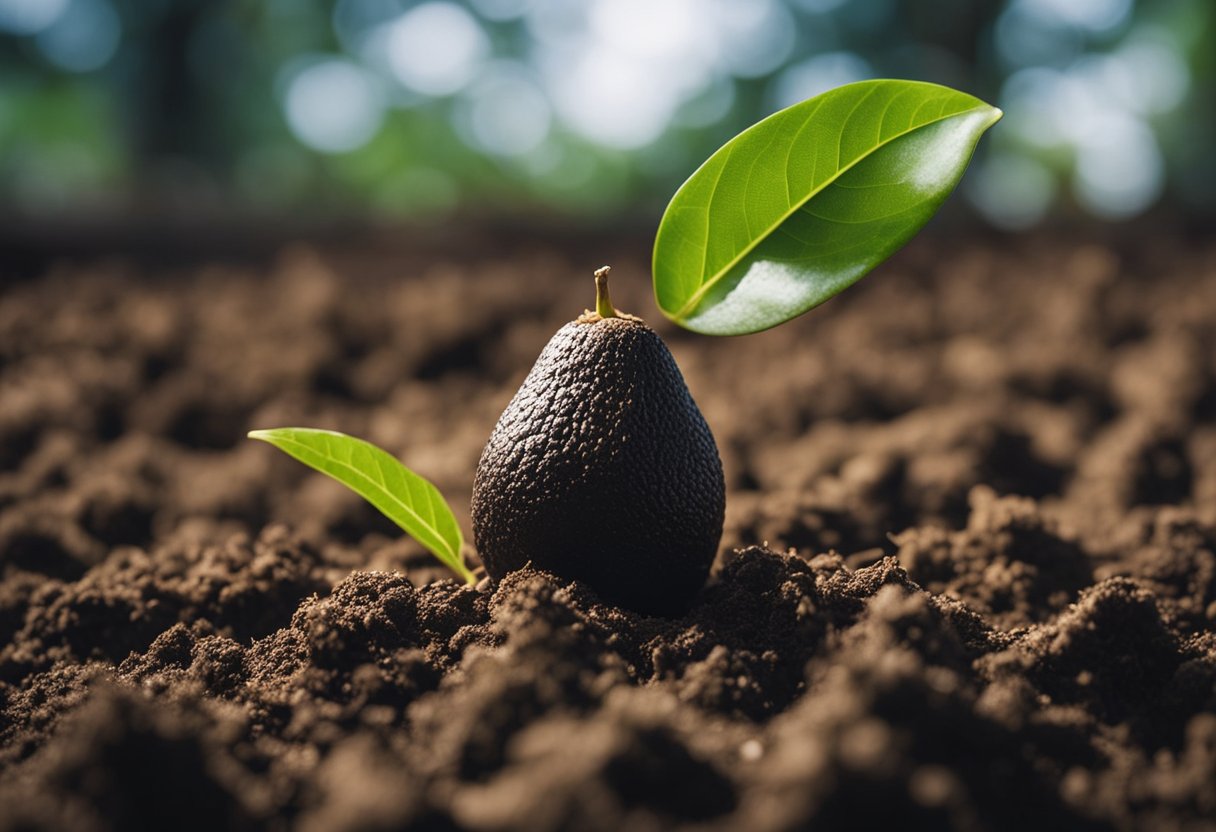
During the juvenile phase of avocado tree growth, the seedling is establishing its root system and developing its first set of leaves. This phase typically lasts for the first 2-3 years of the tree’s life.
Vegetative Growth
As the avocado tree enters the vegetative growth stage, it will begin to grow rapidly in both height and width. During this stage, the tree can grow up to 30-36 inches per year and will produce more foliage as it matures. It’s important to note that while the tree is growing taller, it’s also growing wider and thicker.
To encourage healthy vegetative growth, it’s important to provide the tree with adequate water, nutrients, and sunlight. A balanced fertilizer with an N-P-K ratio of 8-3-9 is recommended for young avocado trees.
Branching Patterns
During the juvenile phase, the avocado tree will also begin to develop its branching pattern. The tree will typically have a central leader branch with lateral branches growing off of it. It’s important to prune the tree during this phase to encourage a strong branching structure.
Pruning should be done when the tree is young, around 6 inches tall, by snipping off the top pair of leaves. When the tree reaches a foot in height, it should be trimmed back 6 inches. After this, the tree should be pruned yearly to maintain a healthy branching structure.
The juvenile phase is a critical time for the avocado tree’s growth and development. Proper care and maintenance during this stage will set the tree up for a healthy and productive life.
Flowering and Pollination
As an avocado tree matures, it will begin to produce flowers, which is a crucial stage in the tree’s life cycle. The flowers of the avocado tree are unique in their structure and function, and understanding their anatomy and pollination mechanism is essential for successful fruit production.
Flower Anatomy
The avocado flower is a perfect flower, meaning it contains both male and female reproductive organs. The flower consists of three main parts: the stigma, style, and ovary. The stigma is the sticky surface at the top of the flower that receives pollen. The style is the tube-like structure that connects the stigma to the ovary, which contains the ovules. The male reproductive organs, or stamens, are located in the center of the flower and produce pollen.
Pollination Mechanism
The avocado tree relies on cross-pollination, which means that pollen from one flower must be transferred to the stigma of another flower. The primary pollinators of the avocado tree are bees, but other insects such as flies and beetles can also play a role.
During pollination, the pollen grains from the stamens are transferred to the stigma of another flower, where they will grow down the style and fertilize the ovules. Once fertilized, the ovules will develop into seeds, and the ovary will grow into the fruit.
It’s important to note that not all avocado flowers will produce fruit. The flowers that are not pollinated will wither and fall off the tree. Additionally, environmental factors such as temperature, humidity, and rainfall can affect the timing and success of pollination.
Understanding the anatomy and pollination mechanism of the avocado flower is essential for successful fruit production in avocado trees. By ensuring proper pollination, avocado growers can increase fruit yield and quality.
Fruit Development and Maturation
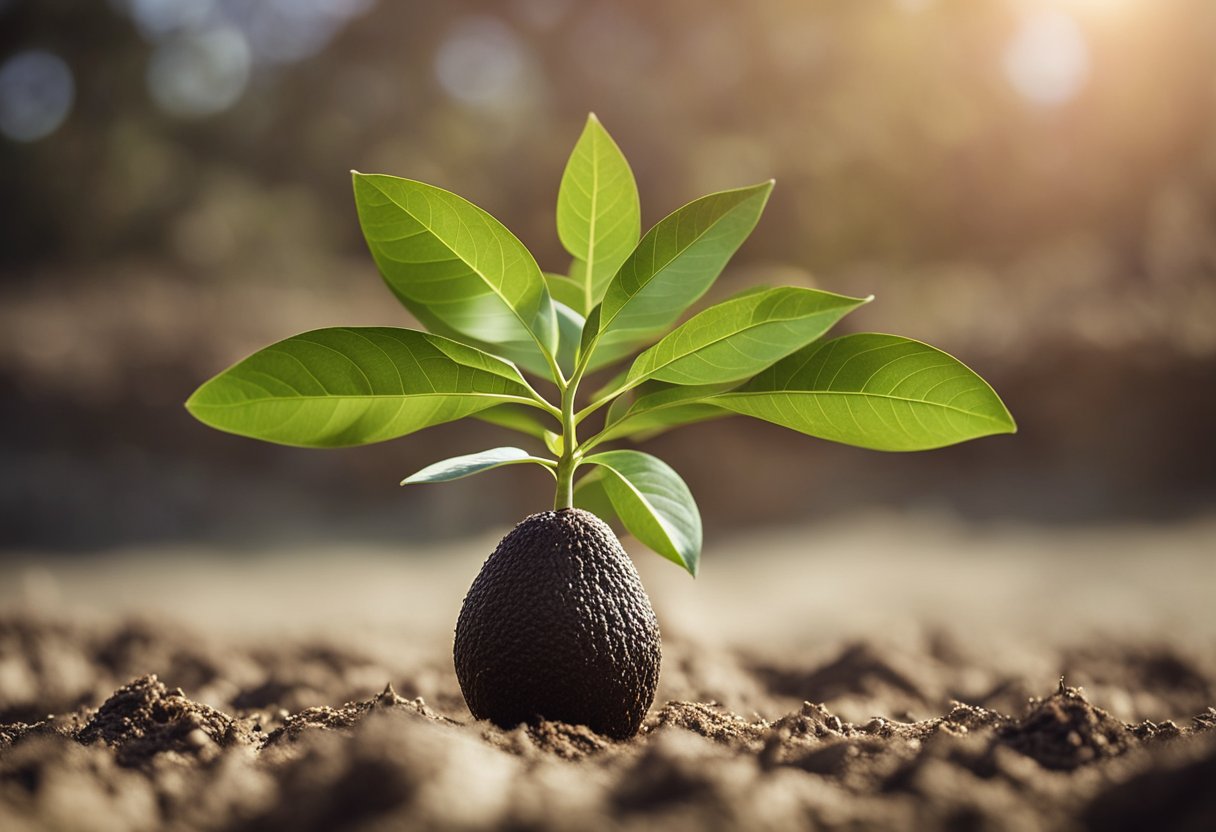
As avocado trees mature, they begin to produce fruit. The development and maturation of avocados can be divided into two phases: fruit set and fruit growth.
Fruit Set
Fruit set is the process by which the tree produces flowers that develop into fruit. Avocado trees are unique in that they have a pattern of irregular bearing. This means that they produce large crops one year and smaller crops the next. The timing of fruit set is influenced by many factors, including temperature, rainfall, and the tree’s overall health.
Fruit Growth Phases
Once the flowers have been pollinated, the fruit begins to grow. There are three phases of fruit growth: cell division, cell enlargement, and ripening.
During the cell division phase, the cells in the fruit begin to divide rapidly. This is when the size of the fruit is determined. The cell enlargement phase is when the cells in the fruit begin to expand, causing the fruit to grow in size. Finally, during the ripening phase, the fruit begins to soften and change color. The flesh of the fruit becomes creamy and the skin turns from green to black.
It’s important to note that avocados do not ripen on the tree. Once the fruit has reached maturity, it will continue to ripen after it has been harvested. Avocado growers must carefully time the harvest to ensure that the fruit is at the ideal stage of ripeness when it reaches the consumer.
Understanding the fruit development and maturation stages of avocado trees is crucial for successful cultivation and harvest. By carefully monitoring the tree’s health and environmental conditions, growers can maximize their yields and produce high-quality fruit.
Mature Tree Care
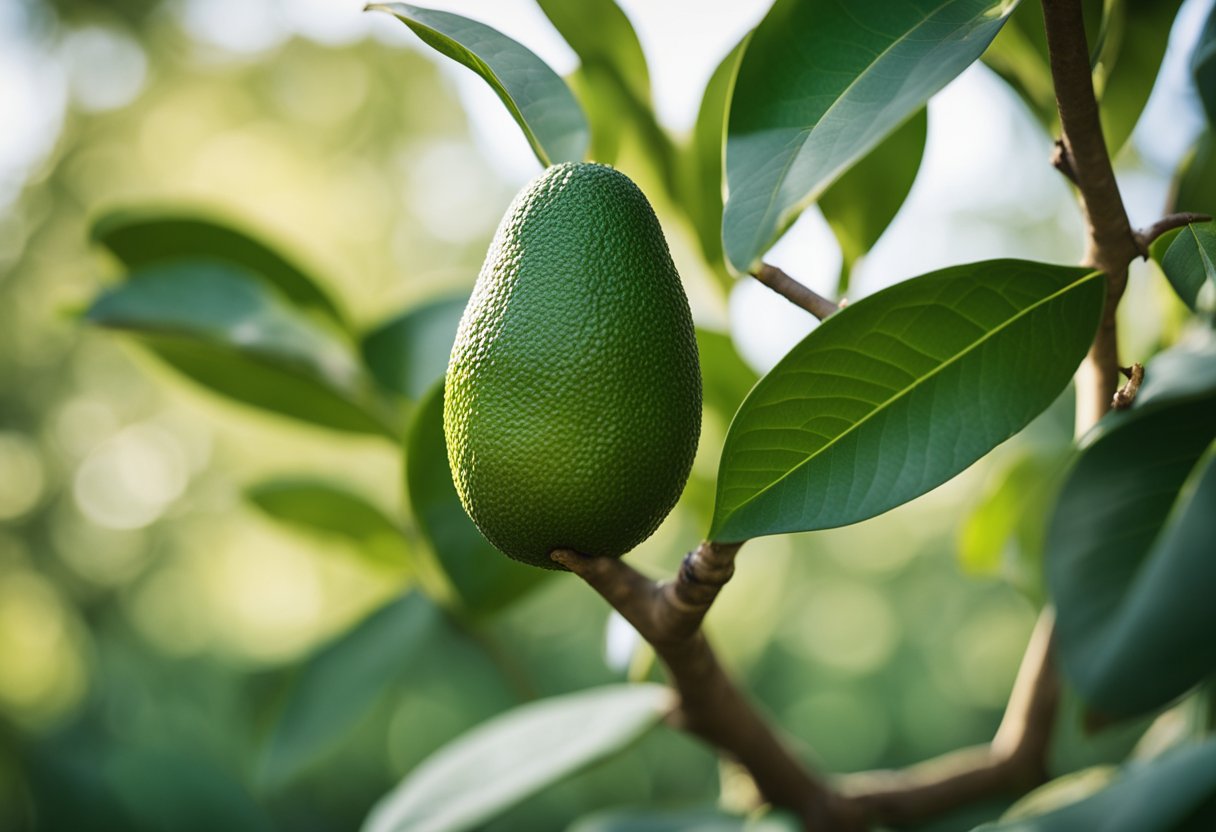
Pruning
As avocado trees mature, they require regular pruning to maintain their shape and promote healthy growth. Pruning should be done during the dormant season, which is typically in the winter months. The goal of pruning is to remove dead or damaged branches, thin out overcrowded areas, and shape the tree to encourage new growth.
When pruning avocado trees, it is important to use sharp, clean tools to avoid damaging the tree. Cut back any branches that are growing too close together or crossing over each other. Remove any dead or diseased branches, and trim back any branches that are growing too long.
Fertilization
Mature avocado trees require regular fertilization to maintain healthy growth and fruit production. The best time to fertilize avocado trees is in the spring and summer months, when the tree is actively growing. Use a balanced fertilizer that contains nitrogen, phosphorus, and potassium, as well as micronutrients like iron, magnesium, and zinc.
When fertilizing avocado trees, it is important not to over-fertilize, as this can lead to excessive growth and poor fruit quality. Follow the manufacturer’s instructions for the amount and frequency of fertilizer application, and be sure to water the tree thoroughly after fertilizing.
Irrigation
Mature avocado trees require regular irrigation to maintain healthy growth and fruit production. The amount and frequency of irrigation will depend on the climate and soil conditions in your area, as well as the size and age of the tree.
Avocado trees require deep, infrequent watering, rather than frequent shallow watering. Water the tree deeply once or twice a week, depending on the weather conditions. Be sure to water the tree at the base, rather than from overhead, to avoid wetting the foliage and causing disease.
Pest and Disease Management
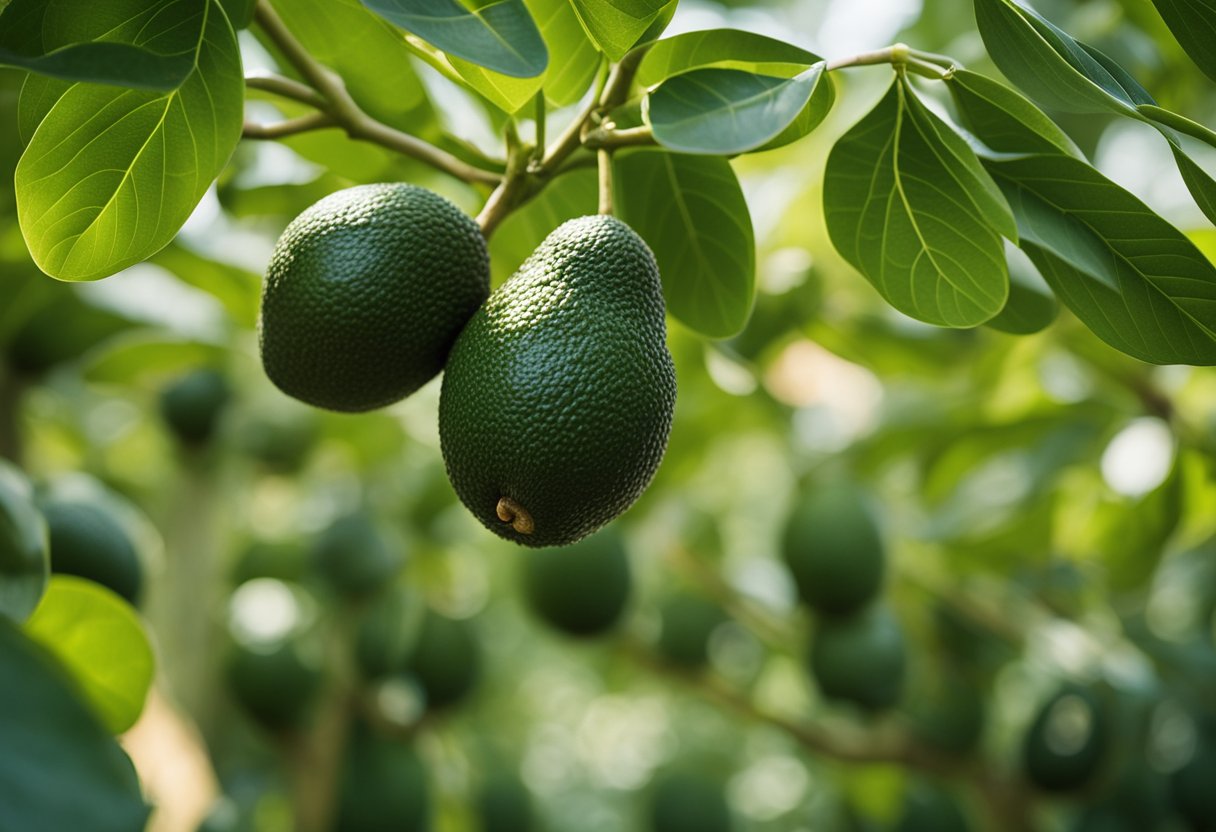
Common Pests
As an avocado tree owner, it is important to keep an eye out for common pests that can damage your tree. Some of the most common pests that can affect avocado trees include spider mites, thrips, and scale insects. Spider mites are tiny pests that can suck the sap from the leaves of your tree, causing them to turn yellow and eventually fall off. Thrips are small, slender insects that can damage the leaves and fruit of your tree. Scale insects can also damage the leaves and fruit of your tree by feeding on the sap.
To prevent pest infestations, it is important to keep your tree healthy and well-maintained. Regularly inspect your tree for signs of pests and take action as soon as you notice any. You can use insecticidal soap or neem oil to control pest populations, but be sure to follow the instructions carefully to avoid damaging your tree.
Disease Prevention
In addition to pests, avocado trees are also susceptible to various diseases, including root rot, anthracnose, and powdery mildew. Root rot is a fungal disease that can cause the roots of your tree to rot, leading to stunted growth and eventual death. Anthracnose is a fungal disease that can cause dark lesions on the leaves and fruit of your tree. Powdery mildew is a fungal disease that can cause a white, powdery coating to form on the leaves of your tree.
To prevent disease, it is important to keep your tree healthy and well-maintained. Make sure your tree is planted in well-draining soil and avoid overwatering. Prune your tree regularly to promote good air circulation and remove any diseased or damaged branches. You can also use fungicides to prevent or control disease, but be sure to follow the instructions carefully to avoid damaging your tree.
Also Read | Mango Tree Growth Stages | Life Cycle
Harvesting
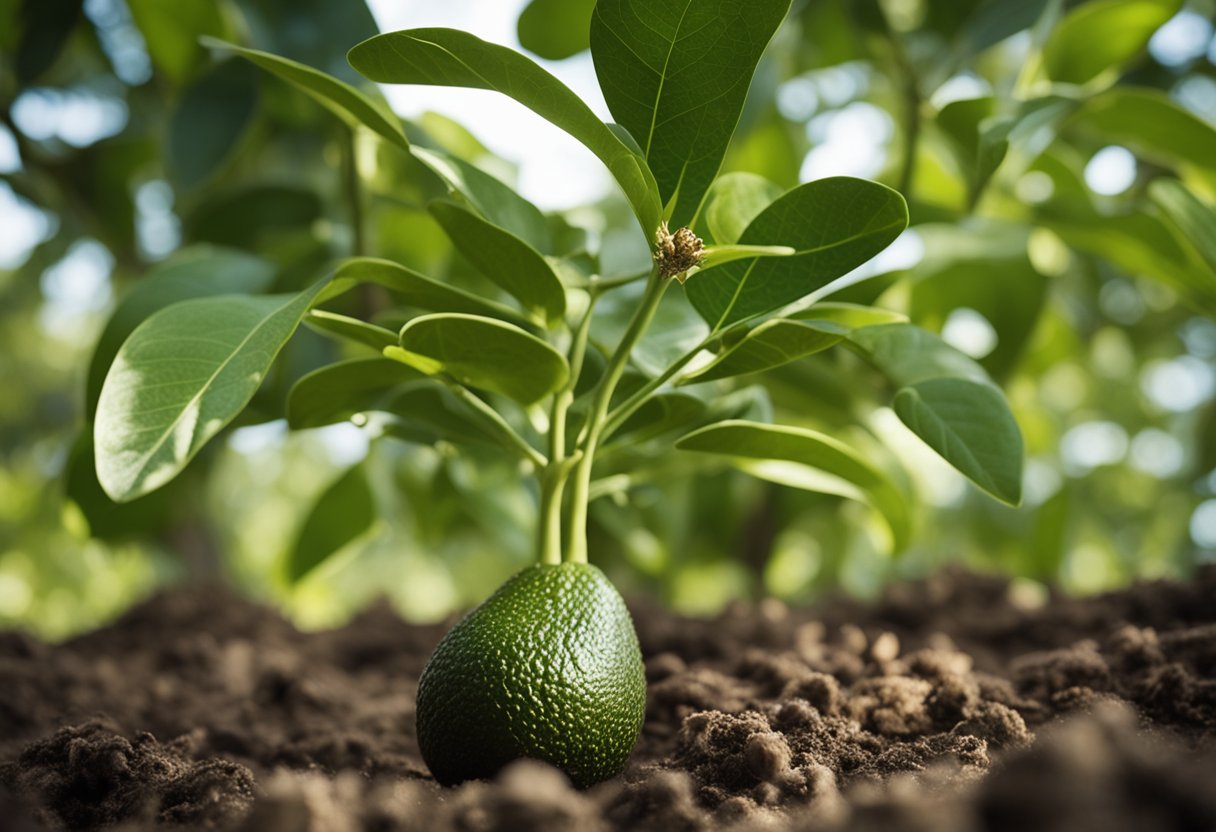
Harvesting Techniques
Harvesting avocados at the right time is crucial to ensure their quality and flavor. Generally, avocados are ready to be harvested when they have reached their mature size and have changed color. The color of the skin varies depending on the variety of avocado, but it usually changes from green to a darker shade of green or black.
To harvest avocados, I use a pole with a picker attached to the end to pluck the fruit from the tree. It is important to handle the fruit gently to avoid damaging it. I try to avoid pulling or twisting the fruit as it can cause the stem to break, and the fruit to be bruised or damaged.
Post-Harvest Handling
After harvesting, it is important to handle the fruit carefully to avoid any damage. I sort the avocados according to their size, shape, and quality. I discard any fruit that is damaged, bruised, or has any signs of disease.
I store the avocados in a cool, dry place to prevent them from ripening too quickly. Avocados produce ethylene gas, which can cause them to ripen quickly if they are stored with other fruits. Therefore, I store them separately from other fruits.
To ripen avocados, I place them in a paper bag with a ripe banana or apple. The ethylene gas produced by the banana or apple speeds up the ripening process. I check the avocados daily to ensure that they are ripening evenly. Once they are ripe, I store them in the refrigerator to prolong their shelf life.
Harvesting avocados requires gentle handling to avoid damaging the fruit. Sorting the fruit according to size and quality is important to ensure that only the best fruit is sold. Proper post-harvest handling and storage help to maintain the quality and flavor of the fruit.
Reproductive Cycle
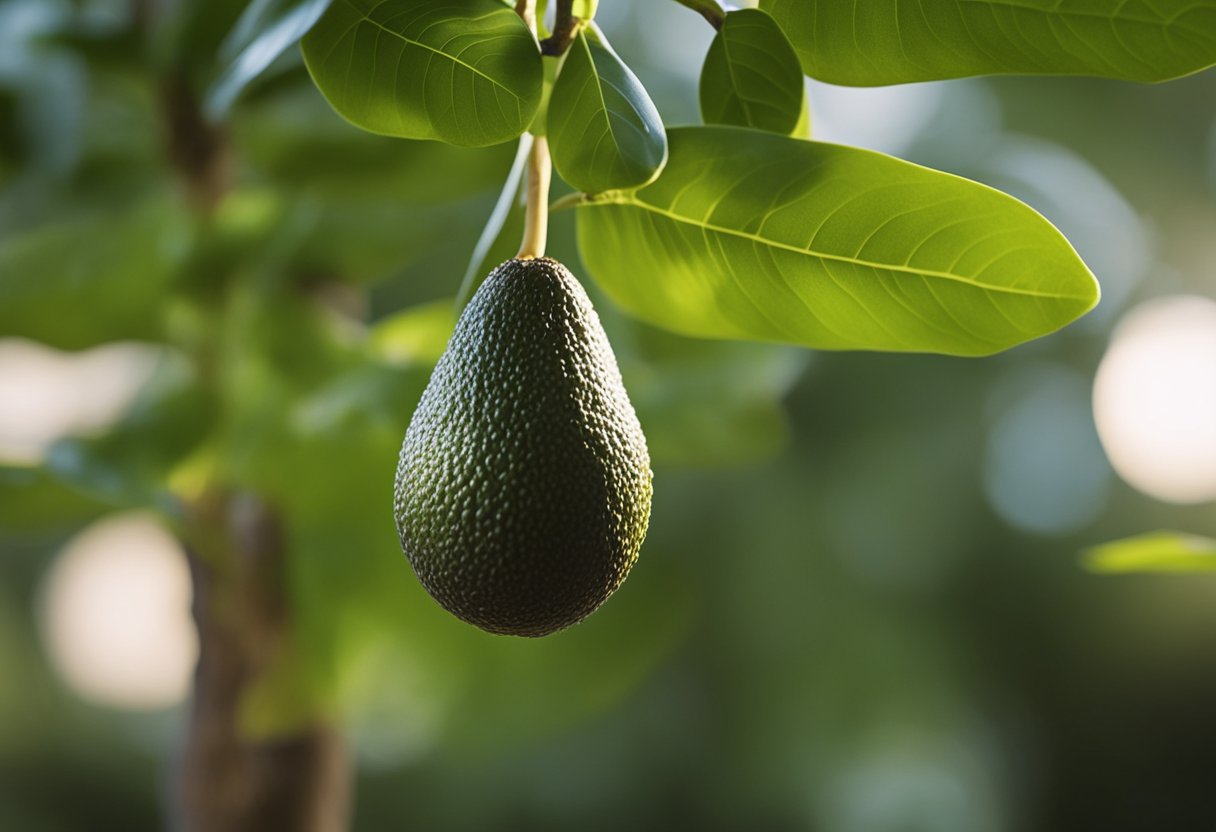
Avocado trees are unique in that they have two distinct flowering periods each year, with each period lasting for several weeks. The first flowering period occurs in late winter to early spring, while the second occurs in late summer to early fall.
Annual Flowering
During the flowering period, avocado trees produce clusters of small, yellow-green flowers. Each flower has both male and female reproductive parts, but they do not mature at the same time. The flowers open as female in the morning and then close in the afternoon and reopen the next day as male. This is called protogynous dichogamy, which means that the female reproductive parts mature before the male reproductive parts. This helps to prevent self-pollination and promotes cross-pollination with other avocado trees.
Fruit Bearing Patterns
Avocado trees typically bear fruit within two to three years after planting, but it can take up to ten years or more in some cases. Once the tree begins to bear fruit, it will produce a crop each year. However, the amount of fruit produced can vary greatly from year to year. Some years, the tree may produce a large crop, while other years it may produce little to no fruit at all.
The fruit bearing patterns of avocado trees are influenced by several factors, including weather conditions, tree age, and pruning practices. In general, younger trees tend to produce smaller crops than older trees, and trees that are pruned regularly tend to produce larger crops than those that are not.
Understanding the reproductive cycle of avocado trees is important for growers to optimize fruit production. By promoting cross-pollination and managing fruit-bearing patterns, growers can ensure that their avocado trees produce a consistent and bountiful crop each year.
Tree Senescence
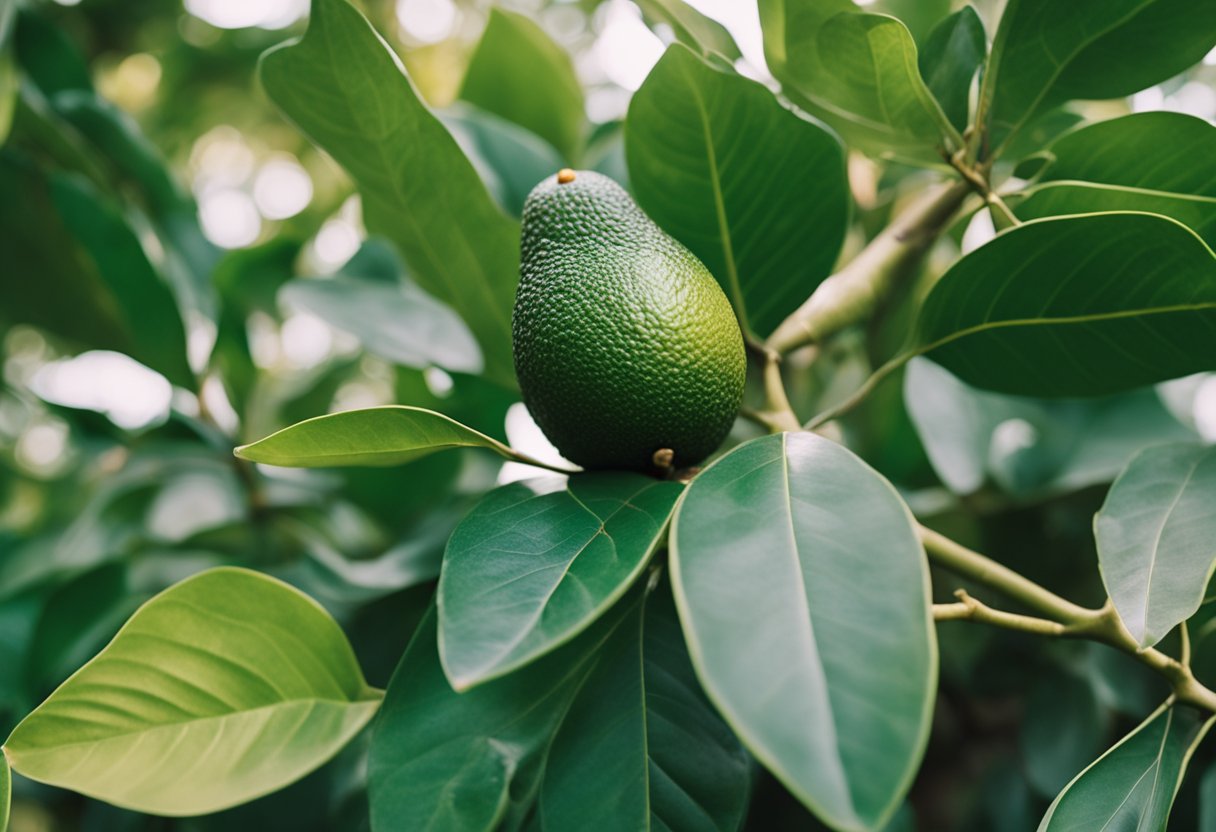
As avocado trees age, they will eventually reach a point where they can no longer produce fruit. This natural process, known as tree senescence, is influenced by a variety of factors including genetics, environmental conditions, and disease.
During the later stages of senescence, avocado trees may exhibit a number of physical signs that indicate declining health. These can include yellowing leaves, decreased fruit production, and a general weakening of the tree’s structure.
While there is no way to completely prevent tree senescence, there are steps that can be taken to prolong the life of an avocado tree. These include regular pruning to remove dead or damaged branches, proper irrigation and fertilization, and careful monitoring for signs of disease.
It is also important to note that different avocado tree varieties have varying lifespans, with some trees able to produce fruit for up to 50 years or more. By selecting the right variety and providing proper care, growers can maximize the lifespan and productivity of their avocado trees.
FAQs – Avocado Tree Growth Stages
What are the stages of flower development in avocado trees?
The stages of flower development in avocado trees are as follows: bud initiation, bud growth, bud differentiation, and bud opening. During the bud initiation stage, the buds begin to form on the tree. Bud growth is when the buds start to increase in size. Bud differentiation is when the buds start to differentiate into male or female flowers. Finally, bud opening is when the flowers bloom.
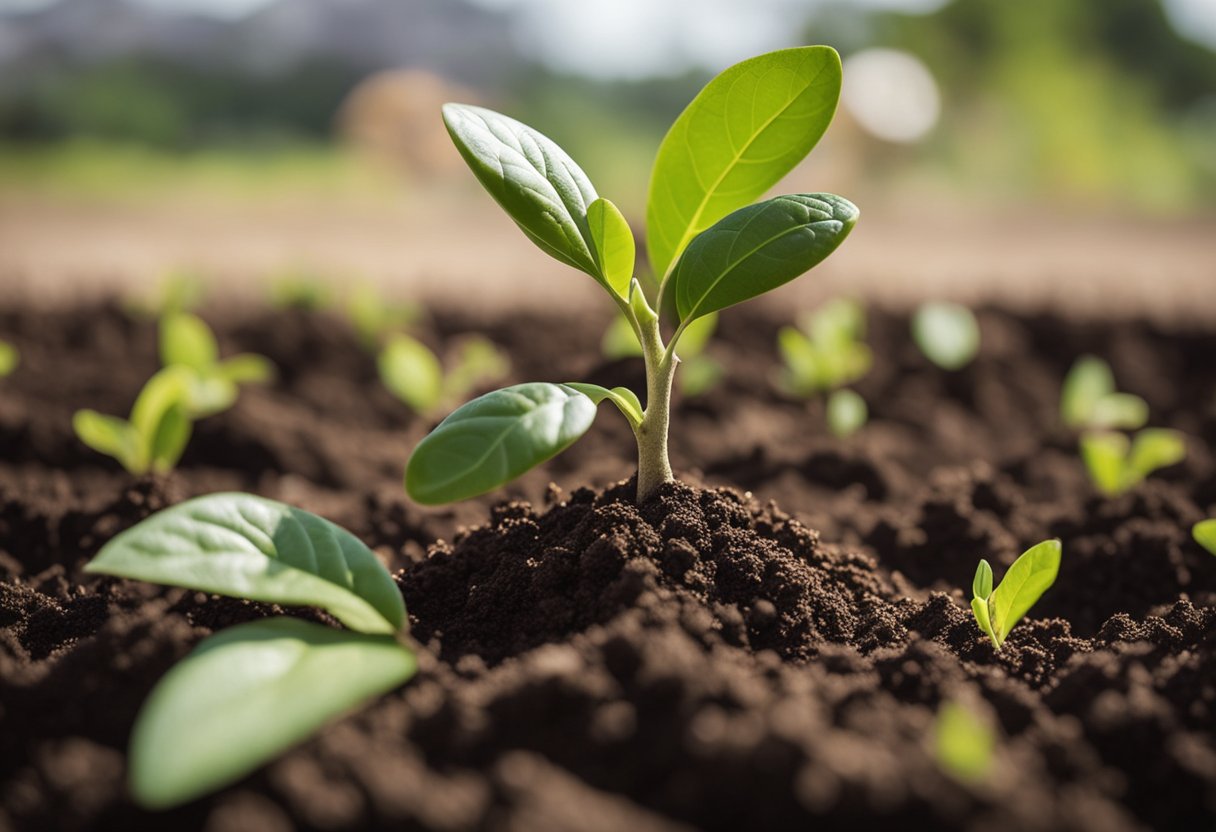
How long does it typically take for an avocado tree to reach full maturity?
It typically takes an avocado tree around 5 to 7 years to reach full maturity. However, the exact time can vary depending on factors such as growing conditions and tree variety.
How often do avocado trees produce new foliage?
Avocado trees produce new foliage on an ongoing basis throughout their lifespan. However, the rate of foliage production can vary depending on factors such as tree age, growing conditions, and pruning practices.
What is the average lifespan of a Hass avocado tree?
The average lifespan of a Hass avocado tree is around 30 to 40 years. However, with proper care and maintenance, some trees have been known to live up to 80 years or more.
What does the fruiting cycle of an avocado tree look like?
The fruiting cycle of an avocado tree typically involves a period of flower development, followed by fruit development, and then a period of fruit maturation. The exact timing of these stages can vary depending on factors such as tree variety and growing conditions.
How long can an avocado fruit remain fresh once refrigerated?
An avocado fruit can remain fresh for up to 5 days once refrigerated. However, it is best to consume the fruit as soon as possible for optimal taste and quality.